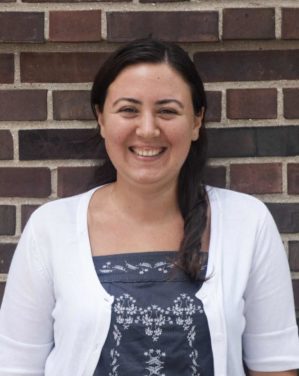
Assistant Professor
Ph.D., University of Arkansas for Medical Sciences
Office: 501-320-7682
Email: Monal@uams.edu
Autophagy in osteoblast lineage cells and resultant effects on bone remodeling
Our laboratory is interested in autophagy in osteoblast lineage cells in efforts to understand the role of autophagy in bone remodeling and age-related bone loss.
Bone Remodeling

Throughout life bone is constantly replaced in numerous sites of the skeleton in response to damage, mechanical forces and metabolic needs. This process of replacement of old bone with new bone is called bone remodeling. The goals of remodeling include the redistribution of bone to adjust to load bearing, maintenance of calcium homeostasis, and replacement of excessively old or fatigue-damaged bone with newly formed bone. Modeling and redistribution of bone in response to mechanical or metabolic needs are achieved by three major cell types: osteoclasts that resorb bone, osteoblasts that form bone and osteocytes which sense mechanical and metabolic needs and produce signals to regulate osteoclast and osteoblast formation. Bone remodeling is performed in compartments that are called basic multicellular units (BMUs). In each BMU the resorption front composed of osteoclasts is followed by teams of osteoblasts that follow behind forming new bone in the eroded areas. Thus, the balance between bone resorption and formation is essential for bone mass accrual and maintenance. A shift in this balance favoring bone resorption, such as observed during aging, leads to lower bone mass and strength which increases fracture risk (osteoporosis).
Autophagy and Bone
Macroautophagy, from here on referred to as autophagy, is a mechanism in which cellular components such as organelles and protein aggregates are recycled to their building blocks in order to produce energy under stress conditions, adapt to changing nutrient conditions, clear damaged/malfunctioning/excess proteins and organelles in order to maintain cellular homeostasis. A decline in autophagy has been proposed to be a contributor of age-associated pathologies in several tissues, in particular in long-lived cell types. As osteocytes are buried in bone, they may live months to years depending on their proximity to the remodeling bone surfaces and the rate of bone turnover. This led us to investigate the role of autophagy in these long-lived bone cells. By utilizing an in vivo genetic manipulation, we prevented autophagy in osteocytes. The mice lacking osteocyte autophagy exhibited several aspects of skeletal aging, suggesting that a decline in autophagy with age may contribute to the low bone mass associated with aging. We are currently investigating the mechanisms underlying the role of and age related-changes in autophagy of osteocytes utilizing in vivo and ex vivo approaches. As macroauthophagy is a process by which cells adapt to changing nutrient conditions and clear excess proteins and organelles, we hypothesized that autophagy maybe playing a role in differentiation of highly secretory collagen matrix depositing osteoblast to osteocytes. To test this hypothesis, we prevented autophagy starting earlier in the osteoblast lineage (osteoblasts and osteocytes). Mice lacking osteoblast and osteocyte autophagy exhibited significantly lower bone mass compared to their wild type littermates. Moreover, these mice had increased incidence of tibial fractures. Lack of osteoblast autophagy also reduced the amount of osteocyte cellular projections and led to retention of endoplasmic reticulum and mitochondria in osteocytes. Taken together these results suggested that autophagy in osteoblasts contributes to skeletal homeostasis and the morphological changes associated with osteocyte formation. We are currently exploring the mechanisms by which autophagy contributes to osteoblast to osteocyte differentiation utilizing in vivo and in vitro methodologies.
Education
B.S. in Molecular Biology and Genetics Department in Bilkent University, Turkey
Ph.D. in Endocrinology Department in University of Arkansas for Medical Sciences, AR USA
Postdoctoral Training in Biochemistry Department of University of Wisconsin-Madison, WI USA
Lab Members
- Nisreen Akel, B.S., Research Associate
Publications
Collaborators
UAMS – The Center for Osteoporosis and Metabolic Bone Diseases –http://intmedicine.uams.edu/divisions/endo/research/combd/
UW – Pike Laboratory – https://biochem.wisc.edu/labs/pike
UW – Attie Laboratory – https://biochem.wisc.edu/labs/attie
